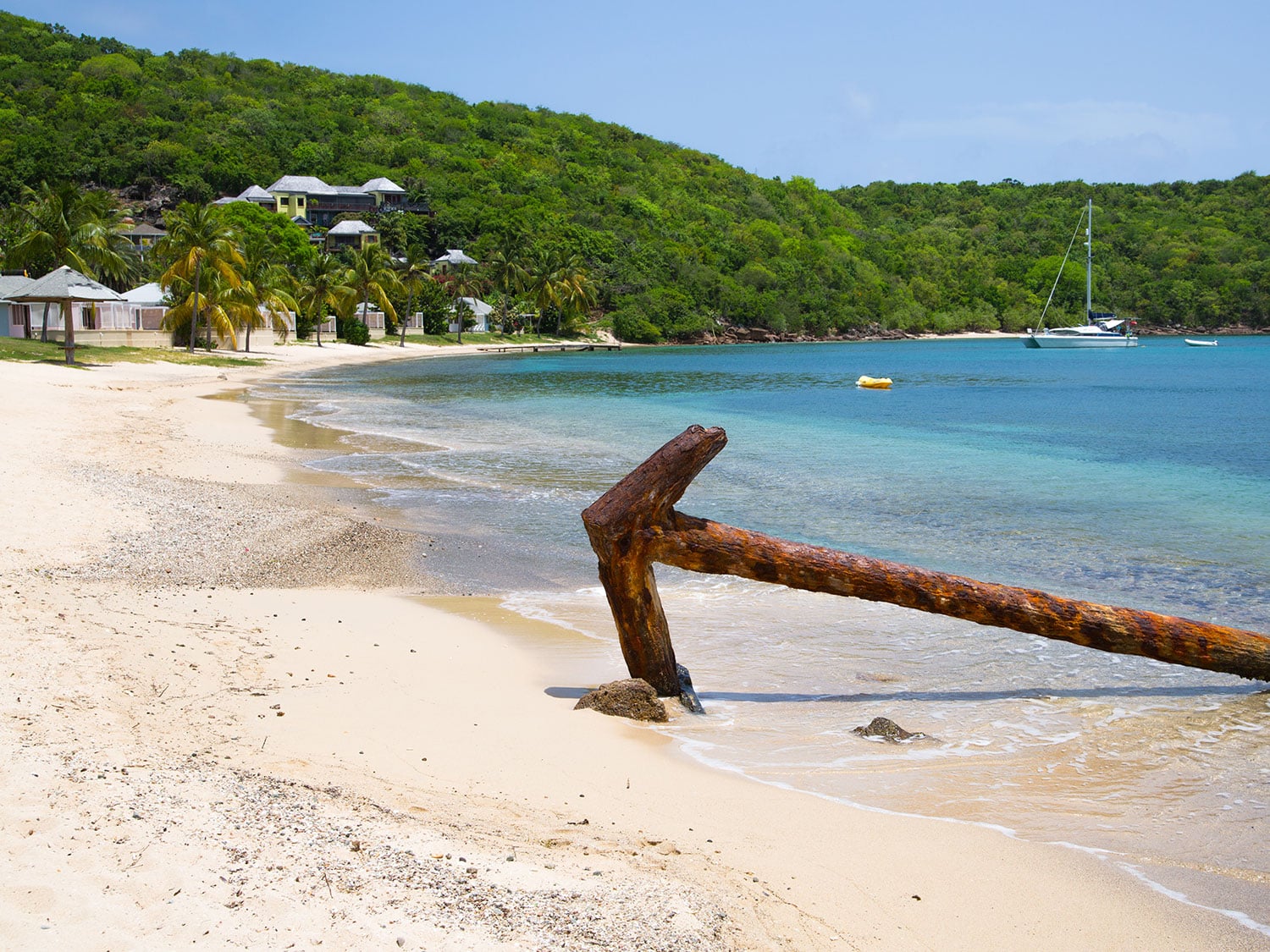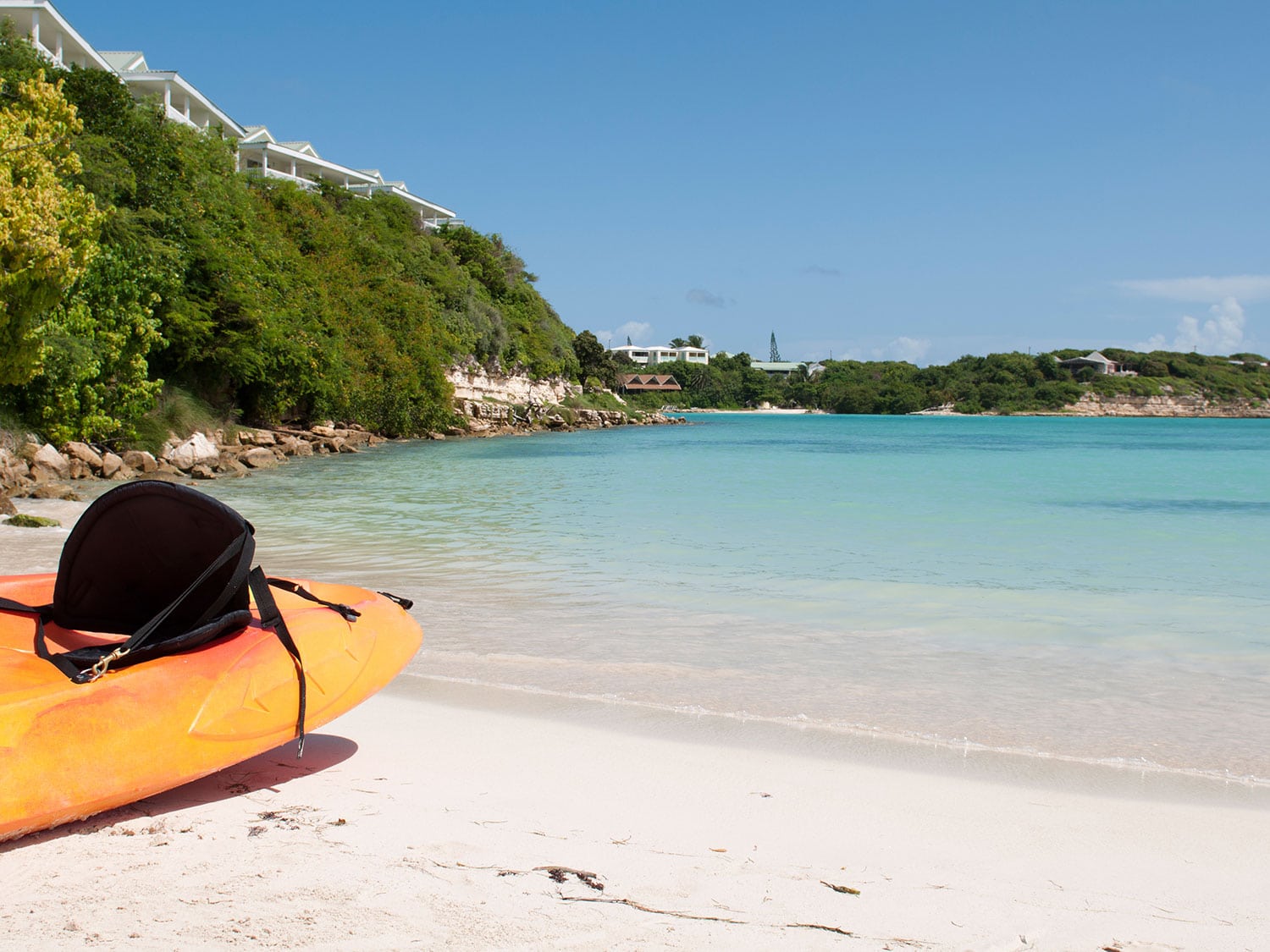A Beginner's Guide To Snorkeling In Antigua
There is a lot happening in the waters surrounding this spectacular Caribbean escape, so it pays to know what to look for and where you’ll find it.
In an island ringed by coral barrier reef, dive and snorkel opps should be plentiful. While it's true a number of shore accessible reefs such as Dickenson Bay, Halfmoon Bay, Long Bay, the Hawksbill Beaches or Pigeon Points can be enjoyed, to reach the best of Antigua's underwater world, guests will need to take a boat to one of the many reefs emerging from the coastal waters.
Galleon Bay
There are always exceptions to the boat-best rule. This quiet little beach offers in hidden gems what it lacks in facilities (though high season will find a fun and funky beach bar for refreshments). The calm, crystal clear water invites visitors with a bonus of a shipwreck dead center in just 15 feet of water, teeming with tropical fish (head all the way to the left of the resort, rumor places it at 17.002196, -61.760391).
This secluded beach boasts a laidback vibe and plentiful sea glass for souvenirs. Snorkelers might spot squid or cuttlefish schools, moray eels, stingrays and if you are lucky a Hawksbill turtle or two. Take a taxi, a water taxi from Nelson's Dockyard, or enjoy as a break on a hiking day from Shirley Heights on the Carpenters Rock Trail en route to Hercules Pillars.
The Cades Bay Marine Park
Certainly the island's most popular and productive spot for great sea life, this two-mile reef with surrounding protected marine reserve is home to 20 dive sites, many shallow enough to afford excellent snorkeling. However, the reef's location a mile offshore makes this a boat-only venture.
A variety of tour options include some unique features; one involves self-driving your own 11-foot inflatable, another includes an eco-kayak through the mangroves and a third includes "power snorkeling" with pull-along scooters. Guests at adjacent Curtain Bluff enjoy multiple free trips just five minutes from their beach each day. Snorkelers can enjoy visibility that can top 100 feet on a good day, perfect to enjoy the colorful splashes of coral and sea fans amongst the rocky rubble that play home to blue tangs, needlefish, trumpetfish, queen angels, butterfly fish, cowfish, wrasse and massive lobster poking their antennae from their hiding holes.
Keep an eye on the sandy patches for southern stingray and the less commonly seen spotted eagle ray. Small nurse sharks occasionally make an appearance, as do sea turtles, but often the abundant fish life is the main feature on this extensive reef.
Wreck of the Andes
Antigua, with its craggy shallow shores and outer ring of coral barrier reef is unsurprisingly home to 127 documented shipwrecks, some—like the Andes—protected by the Marine Areas Act. In 1905, the ship arrived with a friction-smoking cargo of tar barrels and was thusly diverted from the harbor into nearby Deep Bay to anchor. In short time, though long enough to save the crew, the cargo fully caught fire and the ship settled into its final resting spot at the bottom of the bay.
Fortunately for snorkelers, the bay is deceptively named, and the ship not only sits in a mere 30-feet of water but has a protruding mast and tip-of-the-bow that break the surface depending on tides. The 100-foot-long skeleton is now encrusted with colorful hard corals, sea sponges, gorgonians, and a nursery of reef fish tucked in its nooks and crannies. At times, turtles will relax in its protected hull amid schools of snapper.
Visibility might not be as extreme as the outer Cades, but the bay is small and quiet. If the swim from the beach seems intimidating, hug the northern shoreline and head directly to the wreck from the rocky point.
Long Bay
This mile-long stretch of remote beach ensures a serene and relaxing visit. The aqua and turquoise waters are inviting enough just to float about on, but, luckily, they do offer a few underwater sightseeing opps, as well. Partly due to the remote locale, this beach stays mellower, allowing sea turtles a greater level of comfort visiting.
Advanced snorkelers will enjoy testing their skills by meandering through the narrow cuts and channels of the shallow reef to spot eels and scorpion fish. While a decent chunk of reef with a lot of marine life sits 100-feet from shore, a larger and more developed reef sits twice that distance for strong swimmers, those with a kayak (the lone resort on the beach might offer rentals based on their occupancy) or a spotter.
Stingray City
Yes, it's commercial. Yes, it is an unnatural affair to be feeding wildlife. Yes, it is at the time time incredibly memorable and exciting to meet these gentle giants of the sea up close and in person. Despite this experience taking place in the open sea on an unrestricted sand bar (meaning no tanks, no nets, no obstructions to the animals just swimming away or coming/going as they please), purists might object to this animal encounter on principle.
To be sure, the stingrays are enticed to the area knowing a buffet of squid will likely be waiting. Choosing whether to hand feed the silky, velvety smooth creatures or not is up to the participant. The encounter takes place off a wooden dock or platform in the sea, no shade or facilities. An educational talk about the animal and how to safely interact with them is offered for all. Many prefer the more natural experience of simply snorkeling along above them for an opportunity to observe their beauty and grace.

